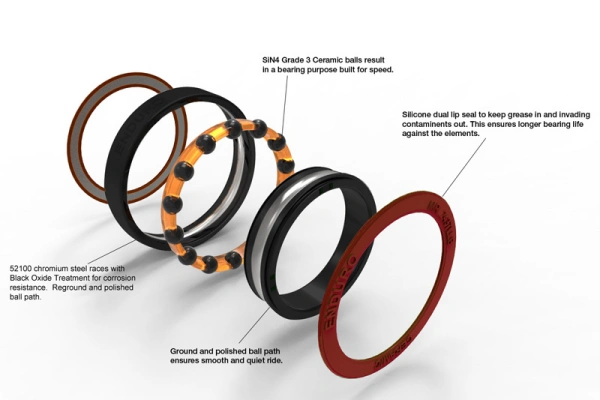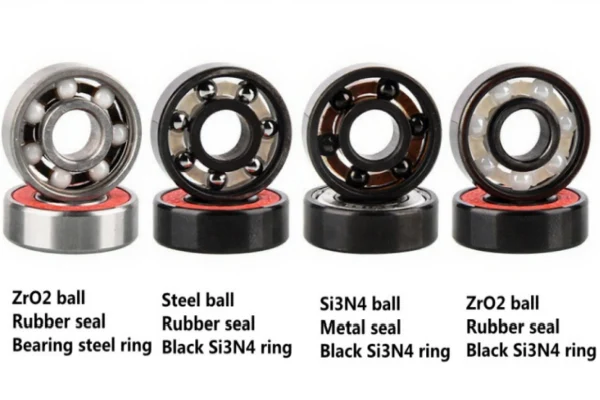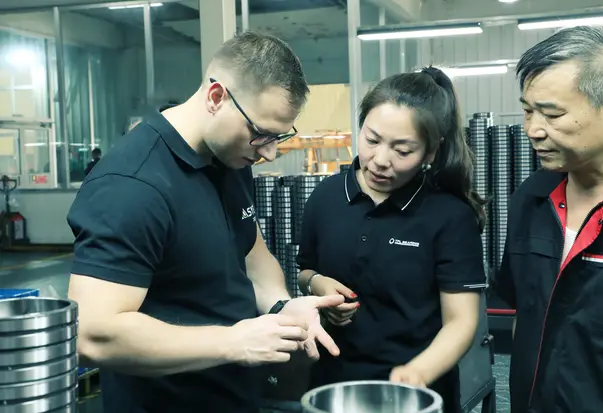Are Chinese ceramic bearings a worthy upgrade or just a marketing gimmick? It’s a question that echoes through every skate park and cycling forum. Riders want to know if these more affordable options can truly compete with the pricey, big-name brands. We’ve compiled the real-world experiences and unfiltered opinions from skaters and cyclists to find out.
Is the Hype Real? What Users Are Saying
The “Buttery Smooth” Experience: The Good
For many riders, the first thing they notice is the incredible reduction in friction. The positive reviews often sound something like this:
"These bearings feel like you're floating. I've never felt this kind of glide before. The difference from my old stock bearings was immediate." - Skater, California
"My wheels spin forever now. I'm using way less effort on my long bike rides and still getting a ton of speed. It's a game-changer." - Cyclist, Texas
This low-friction performance is thanks to the properties of the ceramic balls themselves. They’re incredibly hard, lightweight, and perfectly spherical, allowing them to glide more smoothly than traditional steel balls. This also means they generate less heat, which helps the lubricant last longer and keeps the bearing spinning efficiently.
The “Are They Worth It?” Reviews: The Mixed Bag
Not every review is a glowing five-star story. Some users find the benefits are there, but with a few caveats. These reviews are often more balanced:
"They are definitely faster, and the smoothness is a real plus. But you have to keep them clean. After riding through a puddle, they felt a bit sluggish until I cleaned them out. Not a dealbreaker, just something to know." - Cyclist, Oregon
"For the price, the performance is solid. I wouldn't say they're 'night and day' better than my high-end steel bearings, but they are a bit quicker and hold their speed well. Good value for an upgrade." - Skater, New York
These experiences highlight the need for proper maintenance and the fact that a good ceramic bearing is an upgrade, not a magic bullet.
The “Total Waste” Reviews: The Bad
Unfortunately, some riders have had terrible experiences, often due to buying low-quality bearings. These reviews are often emotional and straightforward:
"These were a complete waste of money. They felt fast for about an hour, and then they completely seized up. I'm back on my old steel bearings and won't be trying these again." - Skater, Florida
"I bought these off a random site because they were cheap. Rust and grinding after one rainy ride. Total scam." - Cyclist, UK
These negative reviews aren’t a reflection of all Chinese ceramic bearings but rather a clear sign that where you buy your bearings is just as important as what kind you buy.
The Durability Question: It’s Not the Bearings’ Fault, It’s the Purchase
A common concern about ceramic bearings, especially those from less-known manufacturers, is their durability. After all, what good is speed if your bearings for skating fail after a few weeks? Many users have unfortunately had negative experiences with low-quality Chinese ceramic bearings. They seize up, they break, and they underperform.
But why does this happen? The problem isn’t with Chinese ceramic bearings as a whole, but rather with the sourcing process.
Many riders fall into the trap of buying from anonymous sellers or unverified online marketplaces, where prices are suspiciously low. These are often middlemen who have no control over the manufacturing process. They use cheap materials and poor quality control to maximize profits, and the end user gets a terrible product. It’s a classic case of “you get what you get.”
Another issue is a lack of transparency. Without knowing the actual manufacturer, users can’t verify the materials used, like the quality of the ceramic balls or the steel races. This is why some bearings for cycling fail so quickly, as they’re made with inferior components that can’t handle the stress of skating or cycling.gs for the longest life, but many find that TFL ceramic bearings give a good balance of price and performance.
The Technical Breakdown (Made Simple)
To understand why some bearings perform better than others, you have to look at their components. Most “ceramic” bearings are actually hybrid ceramic bearings, meaning they have ceramic balls but use steel for the inner and outer rings (races). This is a great balance of performance and durability.
- Seals: The best bearings use non-contact seals or labyrinth seals. These keep out most debris without creating significant drag, giving you the best of both worlds.
- Ceramic Balls: Look for silicon nitride (Si3N4) balls. This material is harder, lighter, and more durable than the cheaper zirconia (ZrO2) ceramic. It’s the gold standard for high-performance bearings.
- Steel Races: High-quality hybrid bearings use stainless steel races. This prevents rust and corrosion, which is a major enemy of a smooth-rolling bearing, especially for skaters and cyclists who ride in wet conditions.

Making an Informed Choice: The Key Is in the Source
So, how do you sort the high-quality from the low-quality when there are so many options? The answer from real riders is simple: go directly to a trusted source.
- Look for a Real Manufacturer: Find a brand that is transparent about its factory, its materials, and its production process. A company that makes its own ceramic bearings has full control over quality.
- Demand High-Quality Materials: As we’ve just broken down, the materials matter. A reliable brand will be transparent about the materials they use, and they will use top-tier materials like silicon nitride and stainless steel.
- Reputation and Reviews: Don’t just look at the ABEC rating; that only measures manufacturing precision, not the quality of the materials themselves. A high-quality ABEC 7 bearing can perform far better and last longer than a poorly made ABEC 9 bearing. Instead, look for a brand with a history of positive, verified customer reviews that specifically mention longevity and performance.
Ultimately, the best bearings for skating and cycling are those that strike a balance between performance, durability, and value. They should use top-tier materials, be engineered with precision, and be backed by positive user reviews. Brands that focus on these core principles, like TFL Bearings, prove that you can achieve a truly “buttery smooth” ride without an exorbitant price tag, because they eliminate the middlemen and give you factory-direct quality. best ride every time you step on your skateboard.

FAQ
Are Chinese ceramic bearings as good as expensive ones from big brands?
This is a common misconception. The performance isn’t about the country of origin, but rather the quality of materials and manufacturing. Many users report that high-quality Chinese ceramic bearings from reputable, factory-direct brands can perform just as well—or even better—than some of the more expensive, well-known brands. The key is to avoid cheap, low-quality bearings from unverified sellers and instead choose a brand that guarantees quality materials and production.
What’s the main difference between ceramic and steel bearings?
The primary difference lies in the materials of the balls. Hybrid ceramic bearings use ceramic balls (usually silicon nitride, Si3N4) in a steel race. These ceramic balls are harder, lighter, and create less friction and heat compared to traditional steel balls. This results in a smoother, faster, and more efficient ride. While steel bearings are durable, they are more susceptible to rust and require more frequent lubrication.
How do I know if I’m getting a good quality ceramic bearing?
Look for transparency. A good manufacturer will specify the materials used, such as silicon nitride (Si3N4) ceramic balls and stainless steel races. Be wary of products that are vaguely described as “ceramic bearings” with no mention of materials. Brands like TFL Bearings are transparent about their materials and production process, giving you confidence in the quality of their products.
Do TFL Ceramic Bearings require less maintenance than steel bearings?
While ceramic bearings are more resistant to rust and wear, they still require proper care to maintain peak performance. For example, our TFL 6900 Ceramic Bearings for skating and cycling are designed with low-friction seals that keep out debris but may need occasional cleaning and re-lubrication, especially after riding in wet or dirty conditions. Regular maintenance will ensure a long lifespan and consistent “buttery smooth” performance.
What’s the best TFL Ceramic Bearing for my riding style?
Your choice depends on your specific needs. For skateboarders seeking the ultimate in speed and precision, such as for racing, our TFL 608 ABEC 9 Ceramic Bearings are the top choice. For cyclists looking for high-performance bearings for their hubs or bottom brackets, our TFL 6800 Series Ceramic Bearings are an excellent option. They are engineered to minimize friction and maximize durability, helping you maintain speed with less effort over extended periods.

